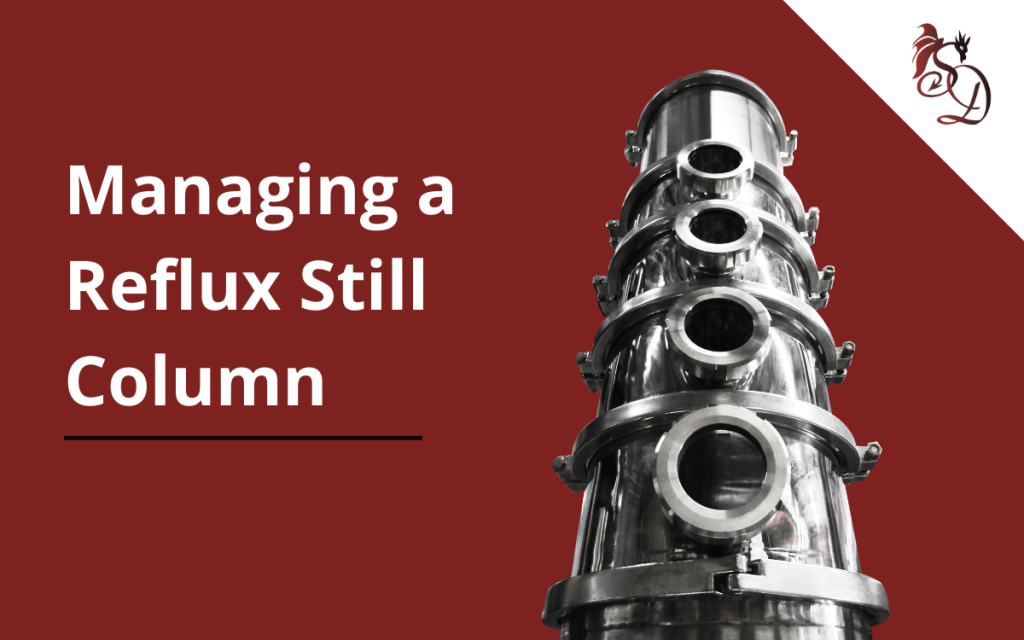Managing A Reflux Still Column

There are a lot of ways to manage your reflux still column and we previously covered using the temperature principle, concentration principle, and vapor-liquid equilibrium graph in this post. The theory in that blog is a wonderful place to start and you should read it if you haven’t.
In this blog, we’re going to go a little deeper into the practical side and talk about how to use these principles to run your system.
In our opinion here at StillDragon, the single most important measurement to use when managing reflux still column is the vapor temperature after the dephlegmator, ideally at the highest point in the vapor path. The temperature of this vapor directly correlates to the ABV you’ll get in your final product.
The temperature in the kettle can be useful to avoid scorching and will help you not overshoot your target on the vapor temperature but it does not correlate strongly with the final product when you’re running a column with active reflux. There’s a stronger correlation between kettle temp and final abv with pot stilling but the cooling medium in the dephlegmator breaks this correlation in a reflux still column.
Similarly, the temperature in the dephlegmator doesn’t really correlate with the final product ABV. If the temperature on the hot side is higher than your target vapor temperature for the product ABV you’re shooting for then that is a problem, but you’ll see that reflected in the vapor temperature as easily as you’ll see it in the dephlegmator coolant temperature.
There’s a balancing act between the amount of heat you throw at the kettle and the amount of cooling you throw at the dephlegmator. Too little heat and your system will run slow but too little cooling and you won’t get good separation and it will affect your final product quality.
Just remember that not all “suboptimal” effects are necessarily bad, you may find that certain conditions allow flavors you want in your final product to pass through the system. Distillation is inherently a separation process and is designed to separate one thing from another, which can include bad flavors or good flavors as well.
All this assumes that you are running in a batch process and not our continuous system. Our continuous distillation technology collects product as a liquid from the reflux column instead of pushing vapor to a product condenser so the systems are managed somewhat differently.
In this case, the temperature after the dephlegmator isn’t a product temperature, it’s the head’s temperature. While it’s possible to manage a batch system pretty well manually, our continuous system is more interconnected and requires more automation to run efficiently. The continuous system is a different animal and if you have questions about it please reach out to us to learn more.
Please leave us a comment below and let us know if you have any questions, suggestions, or tricks of the trade when it comes to managing a reflux column still. There’s no real right or wrong way to make spirits as long as the flavor profile you’re shooting for is consistently being made on your equipment.